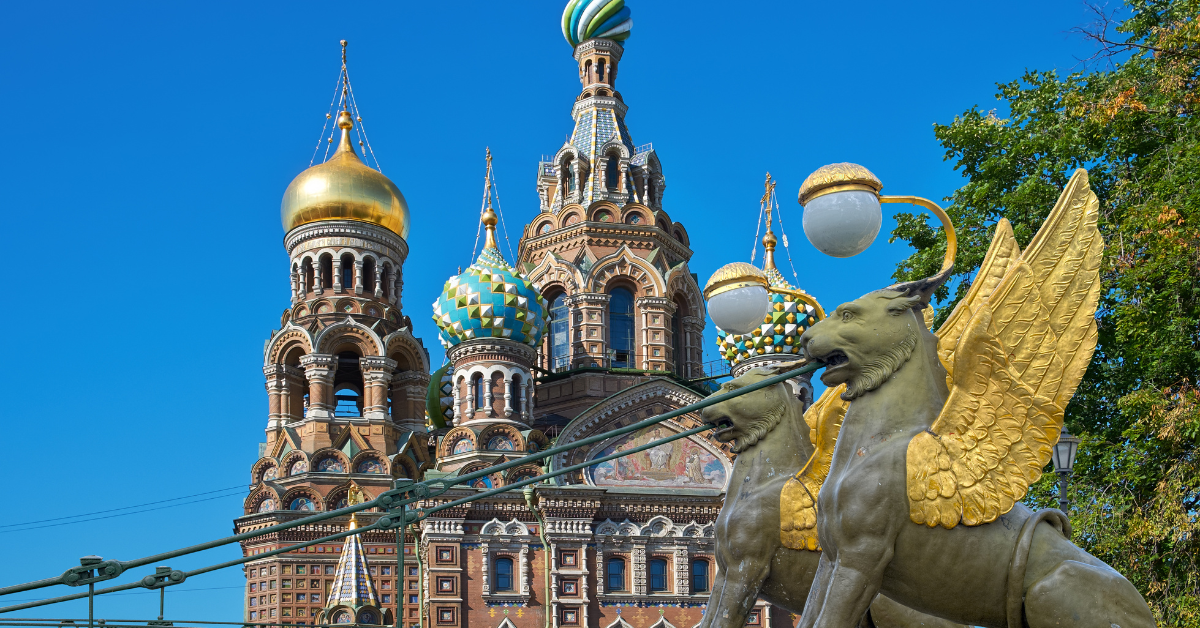Saint Petersburg does not have an official kanji form in Japanese, but the customary expression “聖ペテルブルク” reflects its historical and cultural background. For Japanese people, the city is more than a foreign destination: it symbolizes art, history, sports, and even culinary delights that together create a unique impression.
No Official Kanji Representation for Saint Petersburg
The name Saint Petersburg originates from Russian and is an external proper noun. Therefore, there is no official kanji representation. In modern Japanese, the katakana notation “サンクトペテルブルク” is the most common, but past dictionaries and historical publications included forms such as “聖ペテルブルク” or “聖ペテルブルグ.”
The use of the character “聖” (holy) is believed to reflect reverence toward Saint Peter in Russian Orthodoxy and Peter the Great’s founding vision. During the Soviet era, the city was renamed “Leningrad,” and when it returned to “Saint Petersburg” in 1991, this shift also influenced Japanese notations.
| Notation | Meaning/Background | Usage Context |
|---|---|---|
| サンクトペテルブルク | The most common modern katakana form | Newspapers, travel guides, general articles |
| 聖ペテルブルク | Reflects religious/historical background | Dictionaries, historical books, translations |
| 聖ペテルブルグ | Older form influenced by foreign publications | Old books, older documents |
Image as a City of Art and History
When Japanese people speak of Saint Petersburg, the first impression is that of a city of art and history. The Hermitage Museum, one of the world’s great museums, houses an immense collection including works by Rembrandt and Leonardo da Vinci, highly valued in Japan.
The Mariinsky Theatre is revered as a world stage for ballet and opera, drawing admiration from students and art lovers alike. In addition, the palaces, cathedrals, and canals — registered as UNESCO World Heritage sites — enhance the city’s aura for Japanese visitors.
| Art/Historical Sites | Features | Impression Among Japanese |
|---|---|---|
| Hermitage Museum | One of the world’s three major museums, vast collection | A treasure trove of art, a dream destination |
| Mariinsky Theatre | Renowned for ballet and opera | A place to experience the highest art forms |
| Peterhof Palace | Extravagant fountains and gardens | Symbol of Imperial Russia’s grandeur |
Saint Petersburg as a Sports City
Alongside art, sports also shape the Japanese impression of Saint Petersburg. The football club Zenit Saint Petersburg won the UEFA Cup and is regarded as a strong European club. During the 2018 FIFA World Cup, the city hosted matches, and the state-of-the-art Gazprom Arena gained global attention.
The city is also famous for producing world-class figure skaters and coaches. For Japanese fans, seeing Saint Petersburg athletes on TV and international stages makes the city feel closer and more familiar.
| Sport | Features | Japanese Perception |
|---|---|---|
| Football (Zenit) | UEFA Cup champion | Home of a powerful club |
| Figure Skating | Produces renowned skaters/coaches | Fusion of sport and artistry |
| World Cup Venue | Gazprom Arena built for 2018 | A world-class sporting hub |
Saint Petersburg in Literature
In literature, Saint Petersburg has been an essential backdrop. Dostoevsky’s Crime and Punishment and White Nights are set in the city and are widely read in Japan. These works portray not only the grandeur of the city but also the contradictions of society and human solitude.
For Japanese students of Russian literature, the city is more than a travel destination; it is “a city where stories live”, studied in universities and discussed in classrooms, which deepens its cultural significance in Japan.
Culinary Culture and Its Impression
Culinary traditions also enrich Japanese perceptions of Saint Petersburg. Classic Russian dishes such as borscht, pirozhki, and beef stroganoff are widely known in Japan. Tasting these dishes in local restaurants leaves visitors with a lasting impression.
Its proximity to the Baltic Sea also means that seafood and caviar are popular among Japanese tourists. Culinary experiences, alongside art and sports, make visits to the city memorable.
| Dish | Features | Japanese Impression |
|---|---|---|
| Borscht | Beet-based red soup | Warm and authentically Russian |
| Pirozhki | Fried bread stuffed with fillings | Simple and comforting |
| Beef Stroganoff | Sour cream-based meat dish | Familiar through Japanese Western cuisine |
Real Impressions from Japanese Tourists
Tourists from Japan often exclaim that “the entire city feels like a museum”. The palaces, cathedrals, and the enchanting white nights of summer leave lasting memories.
Challenges such as harsh winter cold and limited English communication are also mentioned. Yet, the kindness of locals and interactions in markets provide positive experiences, making Saint Petersburg a meaningful place of cultural exchange.
The Multifaceted Appeal of Saint Petersburg
As we have seen, Japanese impressions of Saint Petersburg are diverse and layered.
- Admiration as a city of art
- Historical stage from Imperial Russia through the Soviet era
- Center for major sporting events
- A literary city woven into great works
- Cultural familiarity through cuisine
Together, these perspectives make Saint Petersburg not just a “distant foreign city” but also one that resonates emotionally with Japanese people.
Conclusion
Saint Petersburg lacks an official kanji representation, but the customary form “聖ペテルブルク” reflects its religious and historical associations. For Japanese people, the city is not only a city of art and history, but also one appreciated through sports, literature, and food culture. Combined with travelers’ personal experiences, Saint Petersburg stands out as a city of unique and multifaceted significance to Japan.






